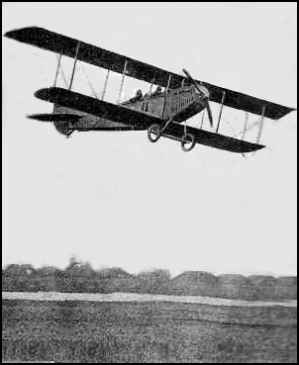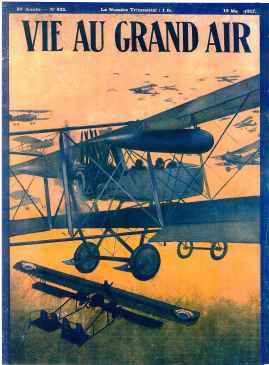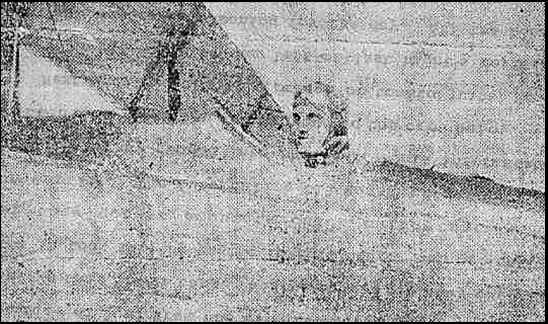

-ca1888-1918 AKA Harold Blakley & Harold Blakeley |
 |
 |
From: LE VIE AU GRAND AIR, (LIFE IN THE OPEN AIR) French quarterly review; 15 March 1917 L'aviation américaine: le lieutenant Blakely effectue le voyage de Philadelphie-Hampstead (188 kilomètres en 1 h. 12 m. record américain). L'aviazione americana: il tenente Blakely compie il viaggio da Philadelphia a Hampstead (188 chilometri in 1 ora e 12 m., record americano). American aviation: The lieutenant Blakely has gone on a flight from Philadelphia to Hampstead (188 kilometers in 1 h., 12 m., American record). Translation courtesy of Giovanni Giorgetti, 10-8-08 |
|
Six Thousand Feet Above San Francisco Bay, and Wins Desperate Battle," Knoxville Journal and Tribune, Knoxville, Tennessee: February 27, 1914, Transcribed by Bob Davis - 2-20-07 When within fifteen hundred feet of the water, he unstrapped himself from his seat and leaped just before his machine struck the water. A tug captain rescued him and towed the aeroplane to shore." Instructor's (Bob Davis') note: A full stall often results in a tuck and roll that looks from the ground as almost turning completely over. If the wings are then unstalled by forward elevator but the wings are not perfectly leveled the aeroplane ends up in a spiral. A spiral usually results in increasing airspeed and the pilot can damage the craft by pulling back too much on the elevator. So this description makes good sense. Evidently Blakley was flying a land plane and not a hydroaeroplane so he couldn't land safely in the water. The landing gear would have flipped the plane when it contacted the water and could have drowned the pilot. |
|
In January 1909 Mr. Joseph L. Cato became actively engaged in aeronautical work. He did miscellaneous aircraft and engine mechanical work for other private builders at the Sunset Aviation Field, Alameda, California. At this same time he designed and started construction of his first airplane, a Curtiss-type, single surface biplane. On October 15, 1909 he made his first solo hop with a 35 HP Curtiss single surface biplane which was owned the the Ames Trycycle Company of San Francisco, who operated the flying school at the Alameda marshes (Sunset Field) CA. Cato paid for his tuition by working as a mechanic during all his Spare time for the Ames people. Mr. Harold Blakely was instructor and manager of the Ames Flying School. In 1910 Mr. Cato, together with Harold Blakley, bought from Ivy Baldwin an old Curtiss-type biplane. Mr. Baldwin was the brother of T. S. Baldwin, who was a famous balloon aeronaut, who built and sold the first dirigible to the United States Army. This Baldwin plane came equipped with a partially-completed 9-cylinder rotary engine. Mr. Cato re-designed this plane engine and completed it for installation in this Curtiss-type plane. They used this engine until it blew off one of its cylinders. Mr. Cato states that they flew this plane for nearly two years and installed several engines. With this plane powered with a three-cylinder two-cycle water-cooled Elbridge engine, he and Mr. Blakely held the endurance record at the field for two months with a flight of twenty minutes. In February 1911 Mr. Cato rebuilt a Curtiss-type plane and did some aeronautical work for other aircraft builders. He also did some exhibition flying. Mr. Harold Blakely was with Mr. Cato during most of his exhibition flying. Mr. Blakely later joined the Tom Baldwin "Red Devils" flying team. When Blakely joined the Sloane Aeroplane Company as a test pilot, he wired Mr. Cato to join him as an experimental test engineer. In April 1916 both Mr. Cato and Mr. Blakley went to work for the LWF Engineering Company of New York City. Mr. Blakely was again the test pilot. Mr. Cato was the Aeronautical Experimental Engineer and assistant to the General Managere, Mr. Albert H. Flint. Mr. Cato was the works manager and directly in charge of all new development and experimental work as well as all flight testing. Mr. Cato tells a very interesting story regarding the original test of the first 12-cylinder Liberty engine installed in a Model V plane in January 1918. It seems that a man became very friendly with Mr. Blakely. This man became well known around the plant and was called "Frenchy." He used to hand Mr. Blakely a cigarette and light it for him before each test flight. On the morning of the first official test flight scheduled for the first 12-cylinder Liberty engine "Frenchy" repeated this pereformance. Me. Cato states that Blakely took the plane up and immediately started erratic maneuvers. As this happened, "Frenchy" got into Blakely's car and drove away. When Blakely crashed and was killed, Cato and otheres rushed to the scene of the crash. Mr. Cato had the engine picked up and placed under guard in one of the hangars. About an hour later, newspapers had the story out in Washington, D. C. that the new Liberty engine crankshaft had disintegrated and asked that the entire program be scrapped. Mr. Cato had seen the bent crankshaft and knew that this report was false. He notified Mr. Flint when he called from Washington. |
|
February 22, 1963 Dear Harold: The two pictures you sent to me are both of the one and only Harold W. Blakely. I am enclosing some others of Blake. I paid Blake's expenses east to take that job with Tom Baldwin, as well as his wife, who followed him a few months later. We shared the same apartment in N. Y. C. and Flushing, L. I. until he was killed in January, 1918. Blake was the best friend I ever had and his death hit me pretty hard. There was another H. W. Blakely in the Air Service and he was known as William, at times he did try to horn in on Blake's achievement. Blake had a brother in Canada, he was not a pilot and spent very little time in U. S. This letter to Harold Morehouse contains the only direct reference to Harold Blakely I have been able to find. Of passing interest is that the spelling of his name is "Blakley" in the Biography written by Major Leland Harp. Harold was compiling a series of biographies on the Early Birds, hence this communication with Cato. |
|
via email from Libby Gunn, 1-3-04 I found your website, and thought maybe you could help me. I'm a freelance writer doing an article for Legacy magazine on the history of northern Alberta ferries. E. T. Blakley had one of the early ferries here in Peace River, but I'm interested in his early life as well. According to his sons, Blakley and his brother were early aviators in Nova Scotia. Harold was the pilot, Everett was the engineer. They entertained at fairs, shipping their plane by train. In 1913 Everett moved to Peace River, and his brother crashed and died shortly afterward. You have a story about Harold Blakely that I think is the same man, because the story of the "funny cigarette" that preceded the crash is the same that his nephews and nieces tell. However, I didn't realize he spent so much time in the states. Also, the nephews say that Harold died a few weeks after Everett left, which obviously doesn't fit. Can you help? I'm also trying to establish a few more dates and details, and to get a sense of where the brothers with their traveling plane pre 1913 stand in aviation history. Anything you can pass on would be much appreciated. Thanks, Libby Gunn Editor's Note: If you can help Libby with her research, please contact me. I will forward your message to her. |
|
Expert Belonging to Indian Harbor; The Work of a Hun Spy? |
 |
|
HAROLD W. Blakeley, a noted aviator, met a tragic death at Central Park, L. I., on January 16th, while
making a trial flight in an airplane. Harold Blakeley belonged to Indian Harbor, Halifax county, and wa a
son of Mrs. John Blakeley, of the place. He was about 30 years old and married. The body has arrived in
Halifax and the interment will take place today. Young Blakeley had been in aviation work for about nine years. At the time he met his death he had been testing out a new kind of motor. Previous to that he had been a civilian instructor in an army aviation school in the States and achieved great success in training men as flyers. He was known as the "daredevil cross country flyer," but at the aviation school he was looked upon as a very careful man in the profession.l He fell from a height of 200 feet and was pinned under the machine, from which he was extracted and sent to hospital. He died on the way there. What went wrong with the machine is not known, but the accepted story is that Blakeley accepted a cigarette from a man just as he was about to start on his flight, and that the man was a German spy and the cigarette was "doped." The Flushing N. Y. papers contain extended stories of the accident by which young Blakeley and a companion named Higgins met their deaths. They related many incidents to the life of the young Indian Harbor aviator, including a noted trip thru the air with Colonel Ramsdell. He did most of his aviation work in the west, having achieved fame for flights in California. He was a brother of Mrs. A. I. Gavin, 76 South street. The deceased has two brothers in the west. Willoughby of Peterville, Alta., and Everett F., of Bear Lake, Alta., also a sister at Peggy's Grove, ALta. |


|